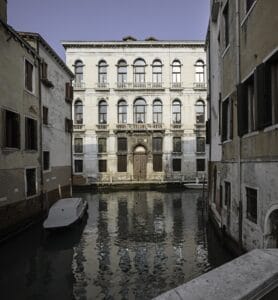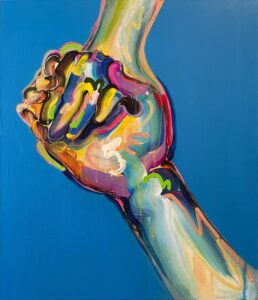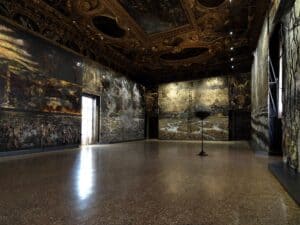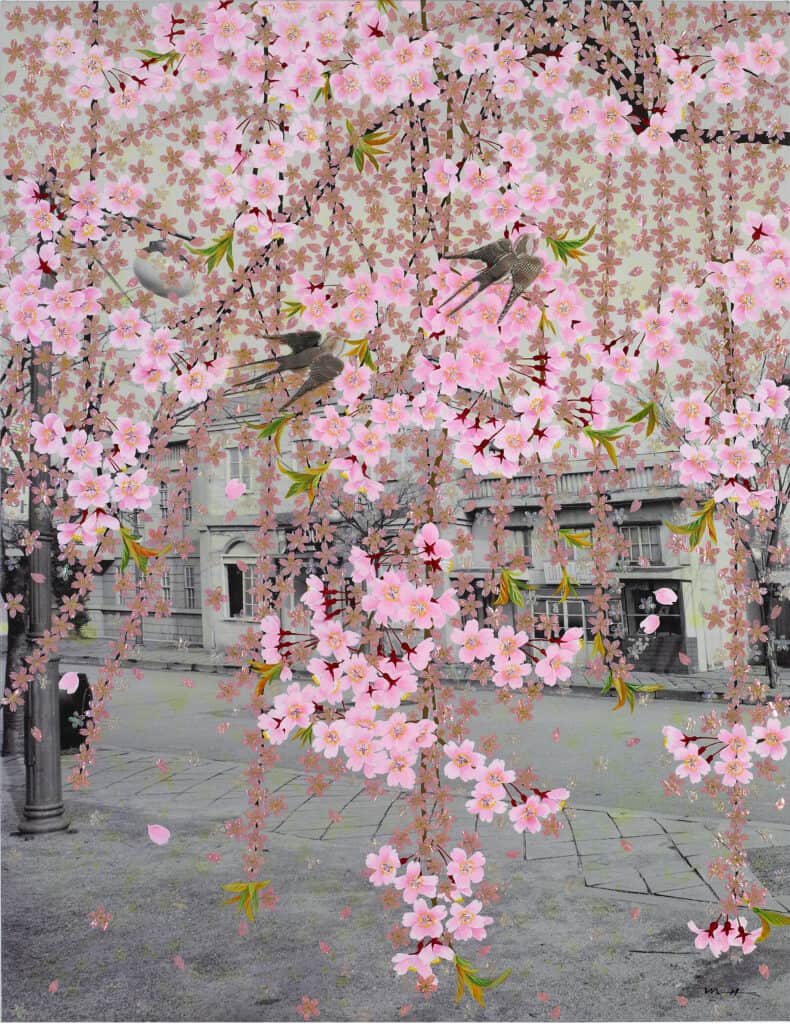
Following the Korean War, the country was impoverished and starving. Yet to the women of Korea, the end of the war also ushered in an era of personal liberation. Japanese suppression gave way to a Western democratic system, opening the door to their wider social participation and, following a post-civil war visit from Hollywood superstar Marilyn Monroe in 1953, the doors swung open even further.
Nevertheless, the social undertow of male privilege and inertia meant that progress has been surprisingly slow — and even more marked when set against Korea’s extraordinary economic growth over the last three decades.
It is this tension — and the resonance of female emotions within a patriarchal society — that South Korean artist Oh Myung Hee interprets in her powerful new body of work ‘The Days were Snowy but Warm’, unveiled at this year’s Personal Structures exhibition in Palazzo Mora, Venice at the invitation of the European Cultural Centre.
This exhibition, which runs concurrently with the Venice Biennale next month, is themed around Reflections — a concept that Oh Myung Hee has interpreted through both the cool gaze of the historical long lens and the close-up of deeply personal family stories.
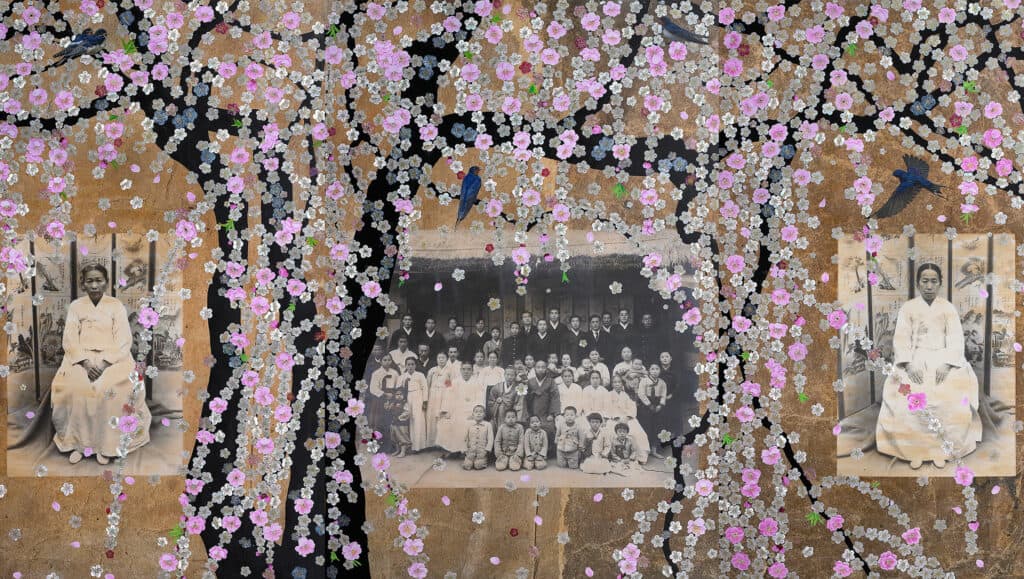
Inspired by a family photograph, discovered in her father-in-law’s album, she was struck by the challenges and contradictions that Korean women have historically had to synthesize in order to access position, purpose and happiness.
The post-war transition meant that women, historically confined to and defined by their role in the extended family for hundreds of years, began to realise their own rights and abilities to contribute to fields such as politics, social affairs, religion and education. Yet this realisation was slow to translate to status.
Mixing old techniques with new materials and technology with old family photographs, Oh Myung Hee uses Hwajo, traditional blossom and birds, in her mixed media work as representations of femininity — a force at once splendid and free — materialising women’s emotions against the historical realities of Korea’s male-dominated society with its underlying Confucianism. Throughout her career, she has also used an image of a flying scarf to symbolize her desire for freedom. Freedom in all aspects of life, from the chains of traditional society, to her desire to fly like a silk scarf in the wind.
This latest exhibition builds on the powerful energy displayed within her works since she came to prominence in the early nineties with an oeuvre featuring vibrant scarves drifting over green grass. Her paintings and images overflow with colours and emotions that seek to embody the powerful prism of femininity and freedom.
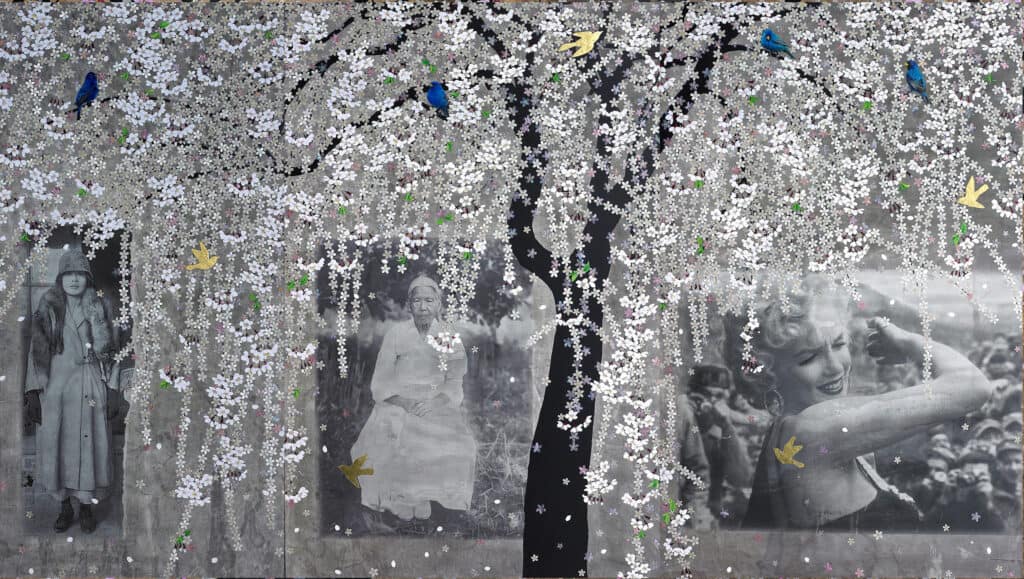
In ‘The Days were Snowy but Warm’, she travels through family stories, via Westernisation, Korean traditionalism and pop culture – notably a 1953 visit by Marilyn Monroe to US troops stationed in Korea. The title of the exhibition paraphrases a Monroe interview quote, in which she describes her performance in front of 17,000 American soldiers as “It was snowing but I felt warm”.
The visit, during her honeymoon with newlywed Joe DiMaggio, was courageous even by Western standards and became a crucial catalyst for the women of Korea. Piqued that more fans turned out in Japan to see Monroe instead of him, the baseball player refused to join her in Korea. They divorced later that year.
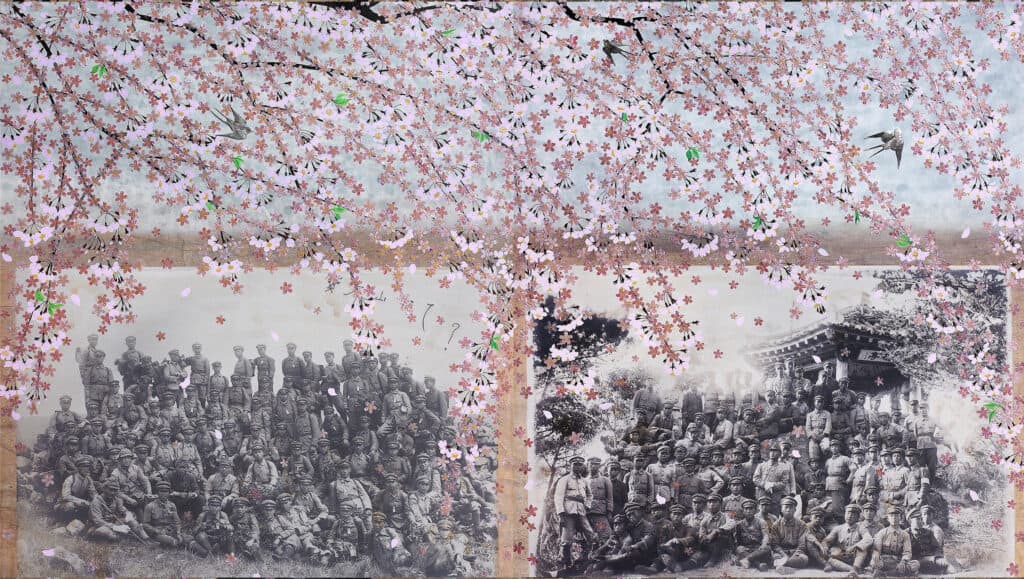
His loss was Korea’s gain. In choosing to pursue her own road, this beautiful free spirit inspired many Korean women to pursue their own dreams and become who they wanted to be. ‘The Days were Snowy but Warm’ challenges a historical ‘narrative of sorrow’ surrounding Korean women, and considers how we must look back to move forward, living and transforming in one unbroken chain of experience.
“My works speak of collective memory. My generation did not directly experience war; nevertheless, we share the pain of our mothers and grandmothers who bore the scars of war. In Korea, the lump in one’s heart that is filled with pain is expressed as ‘Han.’ At first glance, my works might appear flashy, but a closer look reveals the frailty which resembles the emotions of ‘Han’ or the DNA of emotions.
Today I read another article about an unknown soldier who died in the Korean War finally finding rest in the arms of his family. Though 70 years have already passed, the pain of losing a family member never diminishes, and I believe that as Koreans we can all share the pain. Even right now, there is another country which is facing such suffering. It is my hope that the pain that Ukraine is suffering will come to an end soon.
Just as in life, my works aim to communicate the message that though we face pain, conflict and innumerable difficulties, spring comes around again, and just like flowers bloom, so does hope and warmth.”
says Oh Myung Hee.
The European Cultural Centre (ECC) is hosting the sixth biennial contemporary art exhibition, Personal Structures in Venice from 23rd April to 27 November 2022. Preview Days: 21 – 22 April 2022
Throughout its seven months, the exhibition will be complemented with a series of conversations, performances, workshops, that aim to create a dialogue between current developments, ideas, and thoughts in the contemporary art field in today’s context of Time, Space and Existence. www.personalstructures.com
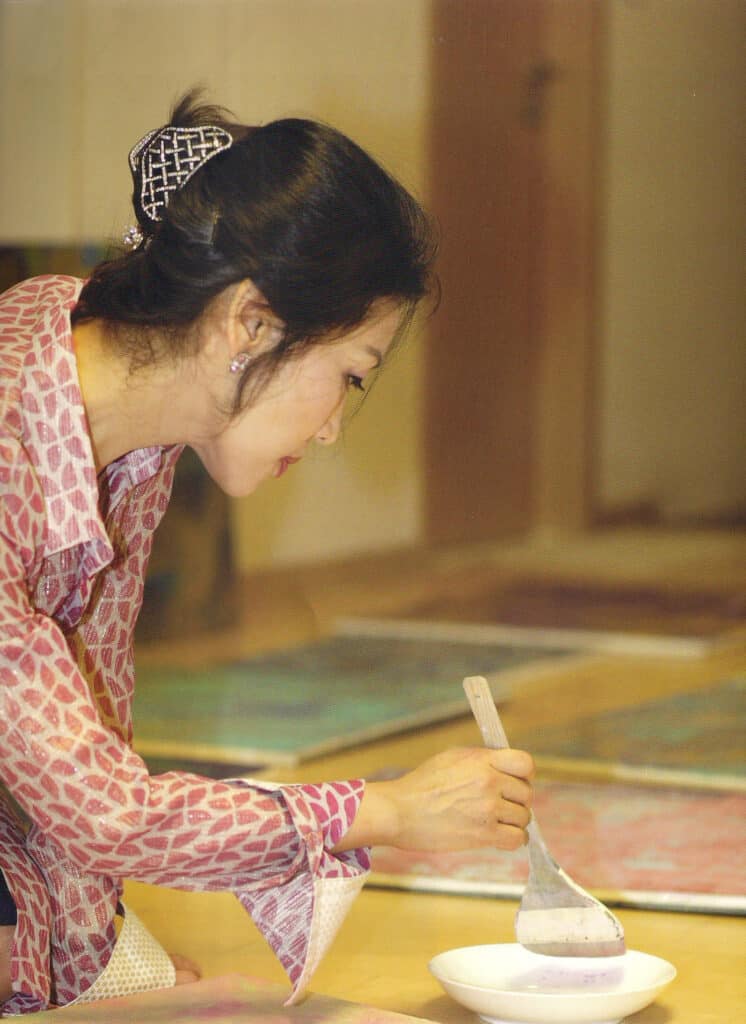
About the Artist
Award-winning artist Oh Myung Hee is a graduate of Sejong University and an Honorary Professor of College of Art & Design, at Suwon University, South Korea. She has exhibited extensively, including a solo exhibition at London’s Saatchi Gallery, the Kaze Gallery, Osaka, the Galerie Bhak, (Bhak Young-Duk), in Seoul, and at the Espace Miromesnil, in Paris.
Eva McGaw and Tatiana Palinkasev established Metamorphosis Art Projects to produce and curate art exhibitions with a special edge. They strive to motivate artists to go one step further, supporting, exhibiting and representing them throughout their artistic journey across the world.
Sponsored by Korea Foundation and NvirWorld. Partner with Samsung The Frame
